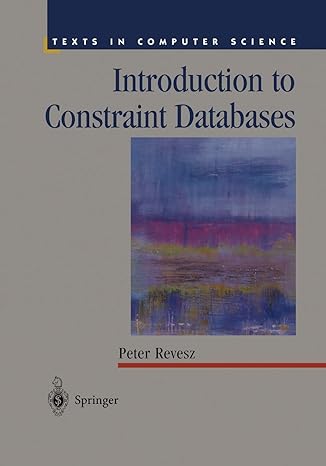Question
Need help with the full code for this assignment. The programming language is C++, and please explain your work Use separate files for class definitions
Need help with the full code for this assignment. The programming language is C++, and please explain your work
Use separate files for class definitions (.h), function definitions and main program (3 files).
Define a Fraction class with num and den as its private data. Include a constructor to initialize the fraction to 0/1, a copy constructor, a destructor, and overloading functions to overload the assignment operator =, the comparison operators <, >, ==, !=, arithmetic operators +, +=, -, -=, *, *=, /, /=, as well as friend functions (non-member) to overload << and >> to output and input a fraction (see book example). Also, include a private member function called reduce() that gets called after arithmetic operations to reduce the fraction. +, -, *, / must return the result of the operation; e.g.: the sum or difference of the two fractions. +=, -=, *= and /= must assign the result of the operation to the object that's invoking the operation; i.e.: frac1 += frac2 must modify frac1 to make it equal to the sum of the two fractions, but frac1 + frac2 must simply return the sum.
If n1/d1 and n2/d2 are two fractions, their sum fraction's numertor is: n1 * d2 + n2 * d1 and its denominator is d1 * d2. To compare the two fractions, you can compare n1 * d2 with n2 * d1.
Define a class called FracList with private members fracPtr, a Fraction pointer and size to hold the size of the array of Fraction objects. Use the List container class developed in the modules as an example. Include constructor, destructor, copy constructor and overload the assignment, insertion (>>) and extraction (<<) operators. the [] operators for accessing array elements (both as lvalue and rvalue - see the example given in last module) and relational operators <, >, ==, and !=. For < and >, compare the size of the two FracList objects and for == and != see if they're identical with identical array elements. Also, include two resize() member function to resize the list, one keeping the existing vales and one without keeping old values (see the List example). Also, include a sort and binary search function (see the example).
In main, create two FracList objects, ask the user how many elements to allocate for each list, read as many Fraction objects from the keyboard as specified by the user into each (using >> operator). Sort both lists using the sort member function and display them; and then search for a value read from the user in both lists and print the index of the first occurrence or that it could not be found in either list.
Swap the two lists entered by the user so that the smaller size list (using < or > operator which only compares their size) is the first and larger size is the second. Use a swap function to swap the two lists. The example given in module did not use a function. Remember to swap two objects, you must either pass them by reference, or pass their addresses into couple of pointers. Print both lists again to verify the swap.
Resize the larger list to a size one larger than its original size, keeping all its values and assigning to its last element the sum of all other fractions (after reducing it), and print again.
Example run of the program:
Enter size of first fraction list: 5
Enter size of second fraction list: 3
Enter 5 fractions for first list: 1/4 1/8 2/3 1/3 1/2
Enter 3 fractions for second list: 3/4 1/5 1/4
Sorted lists:
1/8 1/4 1/3 1/2 2/3
1/5 1/4 3/4
Enter a fraction to search for: 1/4
1/4 was found at index 1 of list 1.
Swapped lists:
1/5 1/4 3/4
1/8 1/4 1/3 1/2 2/3
Resized list with sum of fractions at the end:
1/8 1/4 1/3 1/2 2/3 15/8
Press any key to continue.
Use separate files for class definitions (.h), function definitions and main program (3 files).
PreviousNext
Step by Step Solution
There are 3 Steps involved in it
Step: 1

Get Instant Access to Expert-Tailored Solutions
See step-by-step solutions with expert insights and AI powered tools for academic success
Step: 2

Step: 3

Ace Your Homework with AI
Get the answers you need in no time with our AI-driven, step-by-step assistance
Get Started


